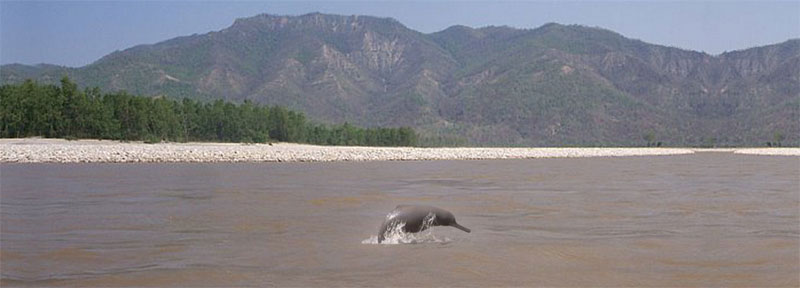First integrated dolphin census concludes
Kathmandu, September 17
The first Integrated Dolphin Census of Nepal that began on July 23 this year has recorded 52 dolphins throughout the country.
Although several small and independent studies of dolphins have been conducted by INGOs in the past, this nationwide integrated scientific census was the first of its kind in the country.
The government, in collaboration with the National Trust of Nature Conservation and the International Union for Conservation of Nature, launched this project in order to get reliable and comprehensive data on dolphins in the country. The census programme was coordinated by the Department of National Park and Wildlife Conservation.
According to the DNPWC, 52 dolphins have been recorded from the Mohana River and its tributaries, Karnali, Geruwa, Narayani, and Koshi rivers. In Mohana and its tributaries, 43 dolphins, the highest number recorded in the country, were found, and nine dolphins were recorded in the Koshi River. No dolphins were recorded in Karnali, Geruwa and Narayani rivers.
Deputy Director General at DNPWC and coordinator of the census programme Dr Maheshwor Dhakal said that dolphins were not recorded in Narayani, Geruwa, and Karnali rivers because the water current in these rivers is stronger during the monsoons. “Although the census was a success, the season was not right to conduct the census,” he told The Himalayan Times, adding, “These rivers are actually the dolphins’ prime habitat, but we could not find them in this season.”
Dhakal added that government plans to conduct another dolphin census in winter. According to Dhakal, flood, poisoning, habitat loss, and fragmentation due to damming of rivers for hydro-power projects and irrigation are major threats to dolphins.
The census was conducted by following a shore-based synchronised counting, boat based counting, key informant interviews, local consultation, and social survey methods. The census covered around 24.8 km in Rajabas, 7 km downstream in Koshi barrage, 57.4 km from Giddhani post to Triveni Ghat in Narayani, 35 km upstream from Chisapani Bridge to Kothighat in Geruwa, 35 km upstream in Chisapani Bridge, and 200m downstream of Karnali in Hulaki highway.
Team leader of the census team and Natural Resource Management Specialist at IUCN Deep Narayan Shah said the dolphins were pushed towards tributaries from major rivers by the strong water current in the rivers during the monsoon.
“Dolphins live in waters that run 1.5 metres to 4 metres deep with a low current widened where they get adequate fish, which makes major rivers inadequate for them during the monsoon, which is why we have recorded more number of dolphins in tributaries than in major rivers,” he said.
READ ALSO:






